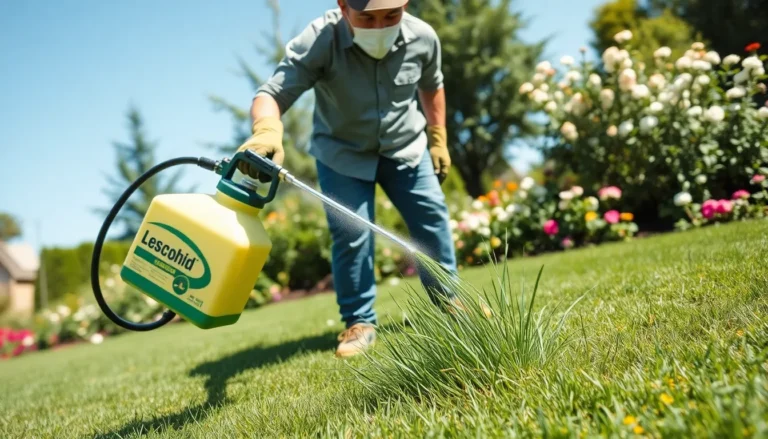Table of Contents
TogglePicture this: you’re all set to binge-watch your favorite show or send that important email, and then—bam! Your iPhone throws a tantrum with a “connection to server failed” message. Frustrating, right? It’s like your phone just decided to take a coffee break while you’re trying to get things done.
Common Causes of Connection Issues
Understanding common causes aids in troubleshooting the “connection to server failed” issue on iPhones. Network settings and server-side problems frequently contribute to this frustrating error.
Network Settings
Incorrect network settings can disrupt connections. Many iPhone users encounter issues due to outdated settings. An unstable Wi-Fi connection often leads to failure messages. Resetting network settings can resolve these issues. This action clears saved networks and passwords, thus restoring connectivity. Verifying Wi-Fi is enabled and the device is connected to the network is crucial. Checking for Airplane mode activation also helps ensure proper connectivity.
Server-Side Problems
Server-side problems often create connection issues as well. An overloaded server can lead to temporary failures. Scheduled maintenance may also affect accessibility. Users might face challenges if the server experiences outages due to technical difficulties. Checking the service provider’s status online can provide timely updates. Engaging with customer support can clarify if a disruptive issue exists on their end.
Troubleshooting Steps

Follow these steps to resolve the “connection to server failed” issue on your iPhone.
Restart Your iPhone
Restarting your iPhone can often clear temporary glitches. Press and hold the power button until the “slide to power off” option appears. Swipe to turn off the device completely. After waiting about 30 seconds, press the power button again to turn it back on. This simple action can refresh your phone’s processes and potentially restore the connection.
Check Wi-Fi and Cellular Data
Ensuring Wi-Fi and cellular data are functioning correctly is crucial. Open the Settings app and select Wi-Fi to confirm it’s turned on and connected to the right network. If Wi-Fi seems unstable, try switching to cellular data by going to Settings, then Cellular, and turning on Cellular Data. Users experiencing issues should also toggle both options off and on again to re-establish connectivity.
Update iOS
Updating the iOS software can fix bugs and improve connectivity. Navigate to Settings, tap General, and select Software Update to check for available updates. If an update is present, tap Download and Install. Keeping the operating system updated helps maintain compatibility with apps and servers, reducing the likelihood of connection problems.
Advanced Fixes
Users facing a “connection to server failed” error can implement advanced troubleshooting methods to resolve their issues with connectivity.
Reset Network Settings
Resetting network settings often restores connectivity. Navigate to Settings, select General, then tap Transfer or Reset iPhone. Choose Reset, then select Reset Network Settings. This action clears Wi-Fi passwords and cellular settings. Ensure to reconnect to Wi-Fi after the reset completes. Users frequently find this step resolves IP addressing and configuration issues effectively.
Use a Different DNS
Switching to a different DNS can improve connection stability. Access Settings, tap Wi-Fi, and select the network in use. Choose Configure DNS, then switch from Automatic to Manual. Users can input the preferred DNS servers like Google’s (8.8.8.8 and 8.8.4.4) or Cloudflare’s (1.1.1.1) for a more reliable connection. This adjustment often resolves latency and downtime caused by default DNS settings.
When to Seek Professional Help
Encountering persistent “connection to server failed” errors may necessitate professional intervention. Users should consider reaching out if basic troubleshooting steps don’t resolve the issue. Technical problems often arise from complex server configurations or hardware malfunctions that average users may not easily diagnose.
Contacting customer support for your service provider becomes essential when experiencing prolonged connectivity issues. They possess the tools and expertise to address server-related problems that affect multiple users. If issues stem from physical damage or malfunctioning hardware, visiting an Apple Store might be necessary.
Apple-certified technicians can evaluate the device for any underlying problems that simple methods can’t fix. Warranty and repair options may save money in the long run if the device requires professional repair. Seeking expert help sooner rather than later prevents further complications, as ongoing connectivity issues can impact device performance.
Collaborating with professionals ensures a thorough diagnosis and effective solutions tailored to unique situations. Understanding when to seek help leads to faster resolutions, allowing users to resume their activities without disruption. Prioritizing professional assistance for persistent issues ultimately streamlines the troubleshooting process.
Addressing the “connection to server failed” issue on an iPhone can seem daunting but with the right approach, users can restore their connectivity. By following the outlined troubleshooting steps and exploring advanced methods, many will find a solution that works for them.
If problems persist despite these efforts, seeking professional help is a wise choice. Whether it’s contacting customer support or visiting an Apple Store, expert assistance can resolve underlying issues effectively. Taking action sooner rather than later can minimize disruptions and enhance the overall user experience, allowing users to get back to their important tasks without further delay.




